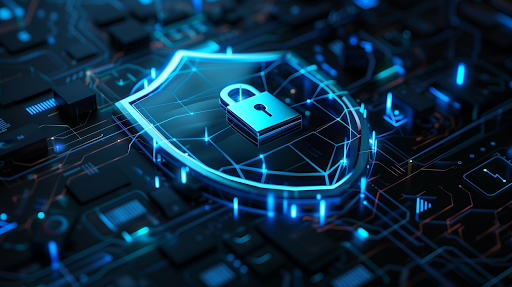About
Solutions
Identify
Protect
Detect
Respond
Recover
News & Events
What is Cybersecurity? 7 Types and It’s Threats

What is Cybersecurity? 7 Types and It’s Threats
In today’s rapidly advancing digital era, protecting corporate data and information systems from cyberattacks has become a top priority. This brings cybersecurity to the forefront, a concept often associated with safeguarding digital assets from increasingly sophisticated and diverse threats.
So, what exactly is cybersecurity? What digital threats are businesses facing today and in the future? Let’s dive into the details below.
What is Cybersecurity?
In its essence, cybersecurity combines the English words cyber (meaning cyberspace or internet) and security (meaning protection). Cybersecurity is the practice of safeguarding computer systems, networks, software, and data from cyberattacks. Its primary goal is to protect devices and data from unauthorized access, alteration, or damage that could result in financial loss or instability.
In the current digital era, cybersecurity is critical to protecting personal, financial, and business information. With the rise of digital data storage, securing this information has become increasingly essential. Losing data or sensitive information can result in both financial and reputational harm.
Types of Cybersecurity
Cybersecurity can be categorized based on the components of the system protected and the types of cyberattacks. These types include:
1. Network Security
Network security safeguards large volumes of data traffic from users. Effective network security helps companies protect their assets and ensure that transmitted data remains secure. Methods for implementing network security include installing antivirus software, using firewalls, enabling two-factor authentication, and encrypting data.
2. Cloud Security
Cloud-based services are widely used for storing essential data, yet they are vulnerable to hacker attacks, necessitating specific cloud security measures. Security steps for cloud protection include installing firewalls, enabling two-factor authentication, and encrypting data.
3. Application Security
Many businesses develop custom applications to streamline services for their customers. Here, cybersecurity functions to prevent data theft risks. Application security generally involves verification through biometrics or official identification.
4. Mobile Security
While mobile devices are personal, their access to external data makes them vulnerable to threats from malicious applications, such as phishing. Mobile security aims to prevent such attacks and protect operating systems and devices from harm.
5. IoT Security
While Internet of Things (IoT) devices offer productivity benefits, they also introduce new cyber threats. Attackers seek to exploit vulnerable internet-connected devices for malicious purposes, such as infiltrating corporate networks. IoT security helps protect devices from suspicious network activity.
6. Disaster Recovery and Business Continuity Planning
This involves processes, monitoring, and planning to respond when malicious activities lead to operational or data loss. These policies aim to restore operations to the same capacity as before a disaster.
7. User Education
Lastly, user education involves processes and planning to educate and prepare organizations for potential operational or data loss due to malicious activities. Such policies ensure organizations are ready to recover quickly after a disaster.
Cybersecurity Threats
When it comes to threats, there are several types of cyberattacks that businesses should be aware of to respond effectively. Despite advances in cybersecurity, threats are becoming increasingly complex. Here are some key cyber threats to note:
1. Malware (Malicious Software)
Malware is malicious software designed to damage, access, or take over systems or data without permission. Examples of malware include viruses, worms, and trojan horses.
2. Phishing Attacks
Phishing attacks attempt to obtain sensitive information, like passwords, credit card details, or personal data, by posing as a trusted entity in electronic communication.
3. DDoS (Distributed Denial of Service) Attacks
DDoS attacks aim to make network resources unavailable to legitimate users by overwhelming the target with unusual internet traffic. DDoS attacks are often used as a precursor to more serious attacks.
4. Man in the Middle (MitM) Attacks
MitM attacks occur when attackers intercept communication or data transfers between users and web servers on a network. Attackers impersonate one of the legitimate parties, intercept information, and send malicious links or false information without detection.
5. Cyber Terrorism
Cyber terrorism involves sustained cyberattacks that create mass fear and panic. These attacks often start with efforts to spread fear, causing confusion and panic in the public. Cyber terrorism aims to disturb public peace and create significant disruption.
Cybersecurity Protection Measures
To strengthen cybersecurity and protect data and systems from increasingly sophisticated threats, here are some essential steps to consider:
1. Apply Security Updates
Ensure operating systems and software are always up to date with the latest security updates. These updates close network vulnerabilities often exploited by hackers.
2. Use Strong Passwords
Avoid using easily guessed usernames and passwords. Use complex passwords that include a combination of characters and numbers, and change them regularly to minimize leakage risks.
3. Use Multi-Factor Authentication (MFA)
Add an extra layer of protection by using multi-factor authentication. This may include one-time passcodes (OTP), authenticator apps, or biometric verification, enhancing account security.
4. Conduct Regular Security Audits
Perform regular security audits for all software and networks to identify risks early. This includes penetration testing, source code reviews, and red team assessments. Once vulnerabilities are identified, prioritize and address them promptly.
5. Use Cybersecurity Services
Finally, consider engaging professional cybersecurity services for additional protection. Experts can help identify weaknesses, implement effective security solutions, and keep your systems protected against evolving threats.
This overview highlights the importance of cybersecurity, the types of cyber threats, and protection strategies. To safeguard your company or business from various cyber threats, implementing the right protection strategies is crucial. That’s where SQURA comes in, offering customized cybersecurity solutions designed to address diverse threats and keep your data secure. With cutting-edge technology and expert support, SQURA can help you build a robust, adaptive defense.
Don’t wait until it’s too late—protect your digital assets today with SQURA and ensure your company’s security in an increasingly digital world.

Blog
Feb 28, 2023
Definition of Security Orchestration, Automation, and Response (SOAR) and the difference with SIEM

Blog
Feb 28, 2023
Understanding how hackers enter the system and how to prevent it

